
All Images credit Wentworth Mansion
Charleston dances to its own rhythm—a city where church steeples sketch the skyline, palmetto trees sway in ocean breezes, and you’ll hear horse carriages trotting along on its cobblestone streets. It’s a place where history feels less like a textbook and more like a neighbor, sipping sweet tea on a porch draped in wisteria. Amid pastel-painted row houses and gaslit alleys, the Wentworth Mansion stands not as a relic, but as a living heirloom.
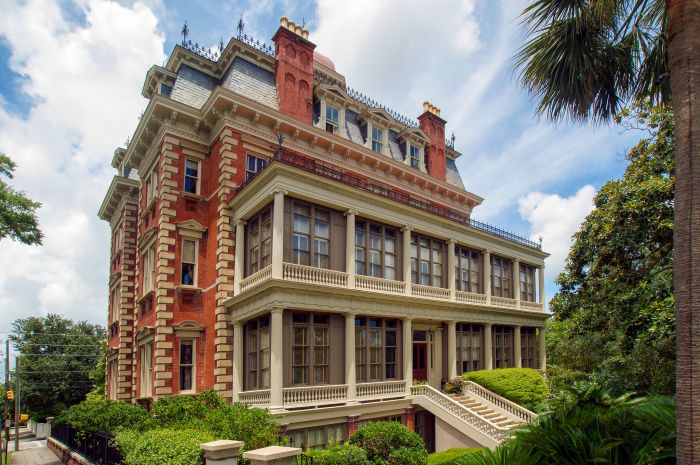
The first glimpse of the Wentworth Mansion stops you in your tracks. Its slate-gray mansard roof, crowned by a copper cupola, rises like a sentinel over Charleston’s Harleston Village. A wrought-iron gate creaks open to reveal a garden where camellias and magnolias frame the path to a mahogany door. Inside, sunlight filters through stained glass, casting jewel-toned shadows on parquet floors polished to a mirror shine. There’s no lobby here—no check-in desk or fluorescent lighting. Instead, a staff member greets you by name, offering a glass of sweet tea as if you’ve arrived at a private estate. Because, in a way, you have.
[embedded content]
The Wentworth Mansion is one of Charleston’s most storied addresses, a 21-room sanctuary where Victorian grandeur meets modern comfort. Unlike larger hotels, it prioritizes intimacy: no crowded corridors, no generic art. Instead, guests find a meticulously curated experience that feels less like a business and more like the private home of a discerning, well-traveled host—albeit one with a world-class spa and one of the top fine dining restaurants in the city. .
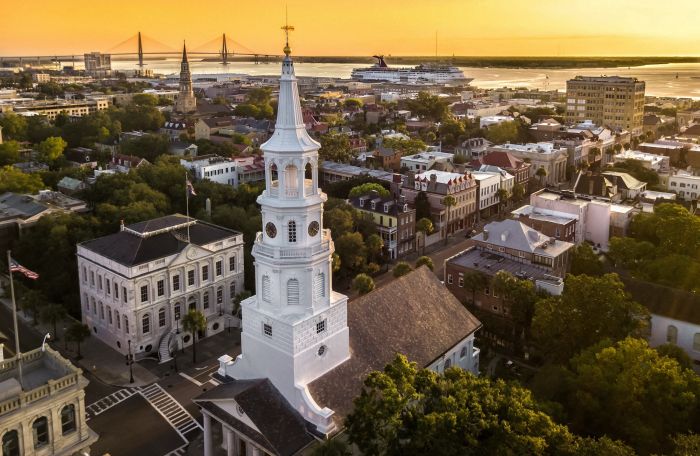
Charleston is a city that surrounds you with cobblestone streets, pastel-hued mansions, and the scent of jasmine mingling with salt air. Set on a peninsula where the Ashley and Cooper Rivers meet the Atlantic, its brackish waterways teem with shrimp and fish, sustaining a culinary tradition as rich as its past. Unlike the grid-planned cities of modern America, Charleston grew organically, its streets winding around historic homes, grand churches, and hidden courtyards draped in ivy.
This is a city that offers both history and hedonism, with art galleries, oyster bars, and quiet garden. Well, as a vibrant nightlife destination, Charleston also pulses with an eclectic mix of sophisticated speakeasies, energetic rooftop bars, and a few rowdy watering holes thrown in for good measure. From the smooth jazz notes filling intimate lounges to the lively buzz of dance floors, the city offers something for every mood after dark. Whether you’re sipping on expertly crafted cocktails or dancing the night away, Charleston ensures the night is as alive as its storied streets.
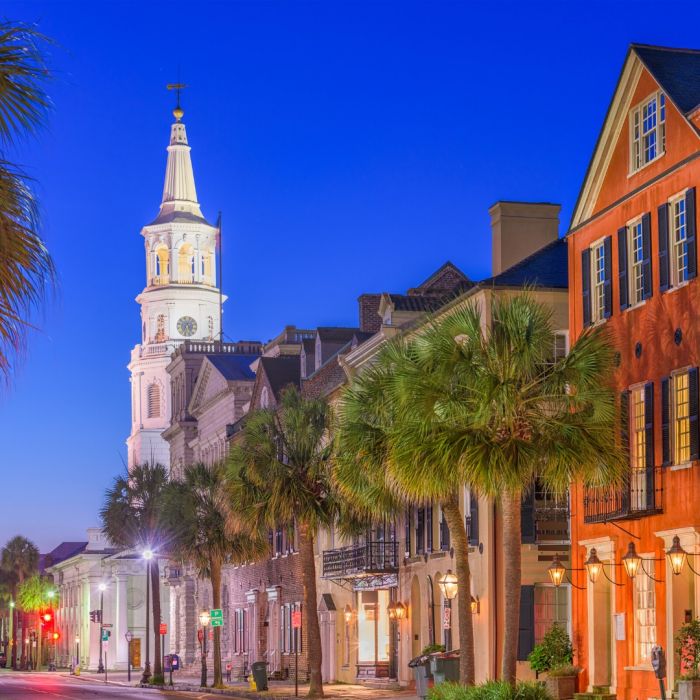
Its skyline, punctuated by steeples, earned Charleston the nickname “The Holy City.” Founded in 1670, it has long been a refuge for religious dissenters—Huguenots, Lutherans, and Protestants—who left their mark on the architecture. St. Michael’s Episcopal Church, its spire rising over the historic district since 1761, stands as a testament to that past. Yet the city does not simply preserve history; it acknowledges and weaves it into the present. Strolling past impeccably kept mansions once owned by shipping magnates and rice barons, one encounters a city that does not shy away from its complexities but embraces them as part of its identity.
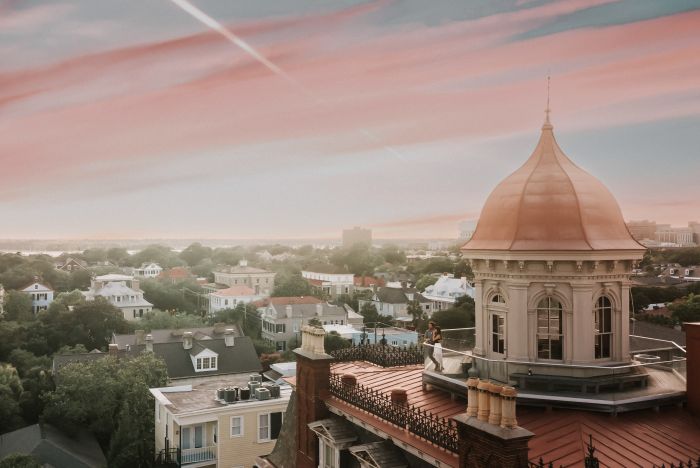
At the heart of Charleston, the Wentworth Mansion offers a retreat steeped in the same sense of history. Tucked along Smith Street in the Historic District, it sits between the Battery, where cannons still face the sea, and King Street, where boutiques and galleries create a lively rhythm. Yet within the mansion’s walls, the bustle fades. The only sounds are the clink of ice in a bourbon glass and the rustle of palmetto fronds.
Charleston remains one of the most celebrated destinations in the U.S., consistently earning accolades from Travel + Leisure and Condé Nast Traveler for its seamless blend of history, cuisine, and Southern elegance. And in the Wentworth, one finds an experience that mirrors the city itself—layered, storied, and impossible to forget.

The mansion’s story begins with Francis Silas Rodgers, an affluent cotton merchant and former Charleston mayor. In 1886, as the city rebuilt from the Civil War and a catastrophic earthquake, Rodgers commissioned this 24,000-square-foot home as a symbol of resilience. No expense was spared: Italian marble, Honduran mahogany, and imported stained glass arrived by steamboat. Rodgers died in 1901, and the mansion passed through various incarnations—a military school, a boarding house, even a doctor’s office—before falling into disrepair. In the 1990s, preservationists transformed it into a hotel, painstakingly restoring original details like its Tiffany glass windows and hand-carved woodwork.
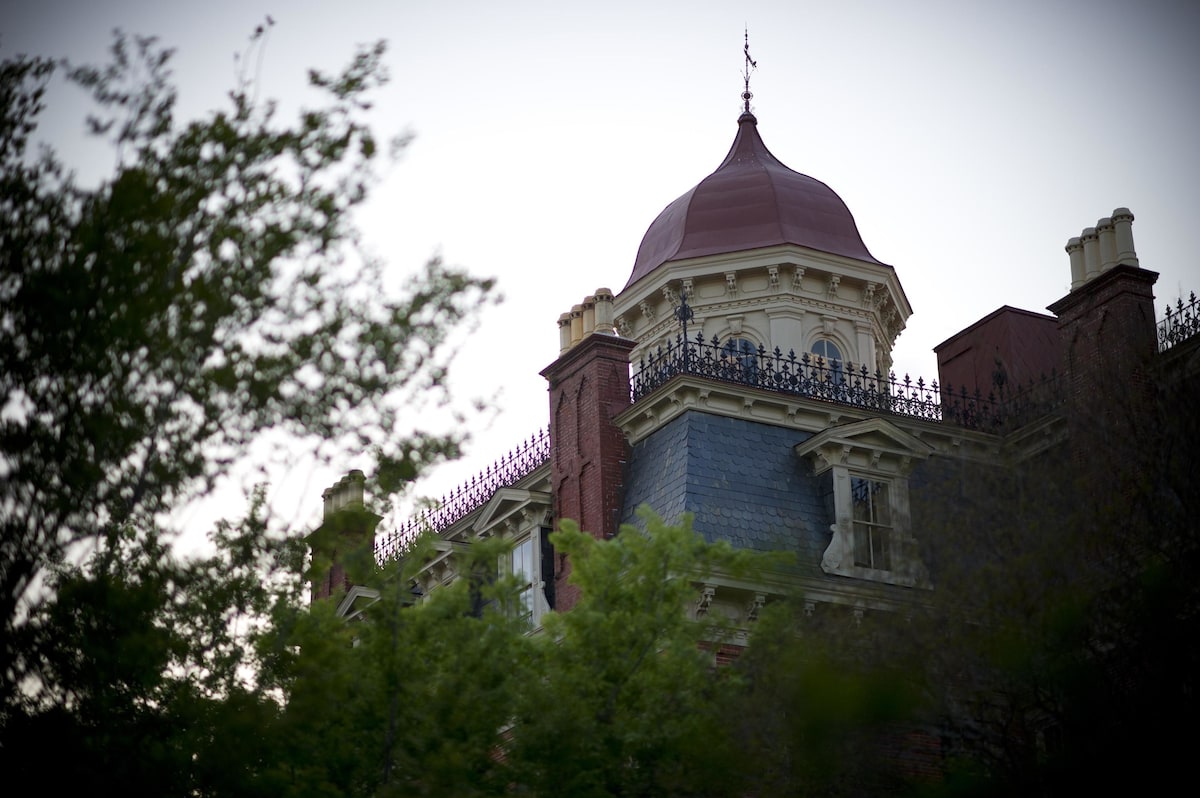
Wentworth Mansion is a rare example of Second Empire architecture in the South, a style more often associated with the grand townhouses of Paris or the opulent mansions of New York. Its symmetrical façade, mansard roof clad in fish-scale slate, and intricate ironwork lend it an air of stately refinement. Rising above it all, a central tower crowned by a copper cupola reaches 70 feet—making it the highest privately owned point in downtown Charleston. That cupola was once Francis Silas Rodgers’ vantage point, a lookout from which he monitored cotton-laden ships arriving in the harbor. Today, it offers guests an unparalleled view of the city. At sunset, the rooftops glow gold, church steeples blush pink, and the Ravenel Bridge shimmers in the distance. Climbing the narrow staircase to the top feels like a pilgrimage, the ascent rewarded with a moment of quiet solitude high above Charleston’s streets.
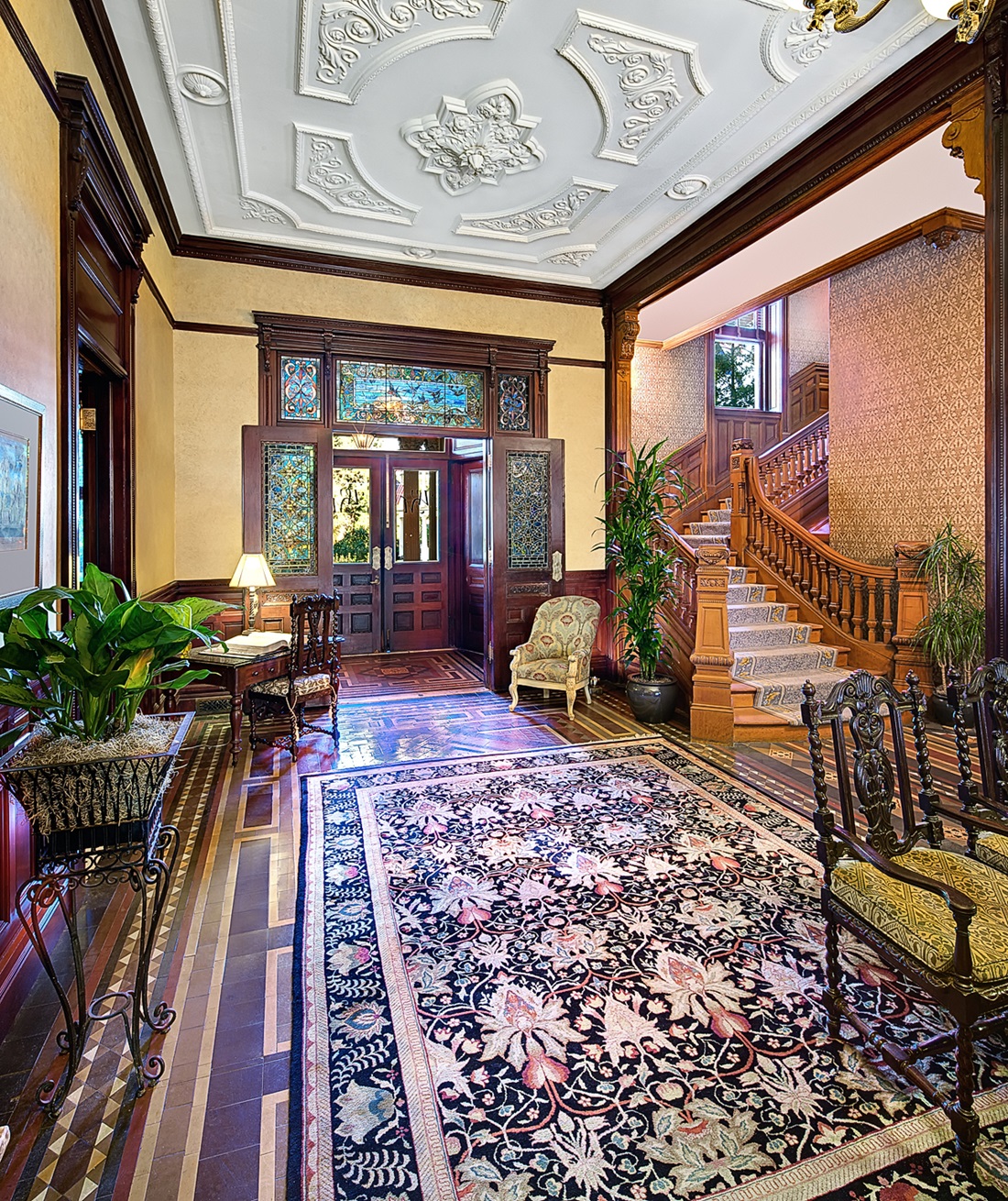
Inside, the mansion reveals itself as a living and functioning museum of 19th-century artistry transformed into a 21st century luxury boutique hotel. The grand staircase, carved from a single oak tree, spirals upward beneath a stained-glass skylight by Louis Comfort Tiffany. In the parlors, fluted columns frame fireplaces of Verde Antique marble, while pocket doors slide silently on brass tracks.

The woodwork is the star here. Panels of quarter-sawn oak, mahogany, and cherry line the walls, their grains swirling in intricate patterns. Craftsmen used no nails—only dovetail joints and hidden pegs—to create parquet floors resembling Persian rugs. Even the door hinges are works of art, cast with floral motifs. Yet the mansion avoids stuffiness. Contemporary art by Southern painters hangs alongside oil portraits of the Rodgers family. Velvet settees in emerald and sapphire tones invite lounging, while fresh gardenias perfume the air.
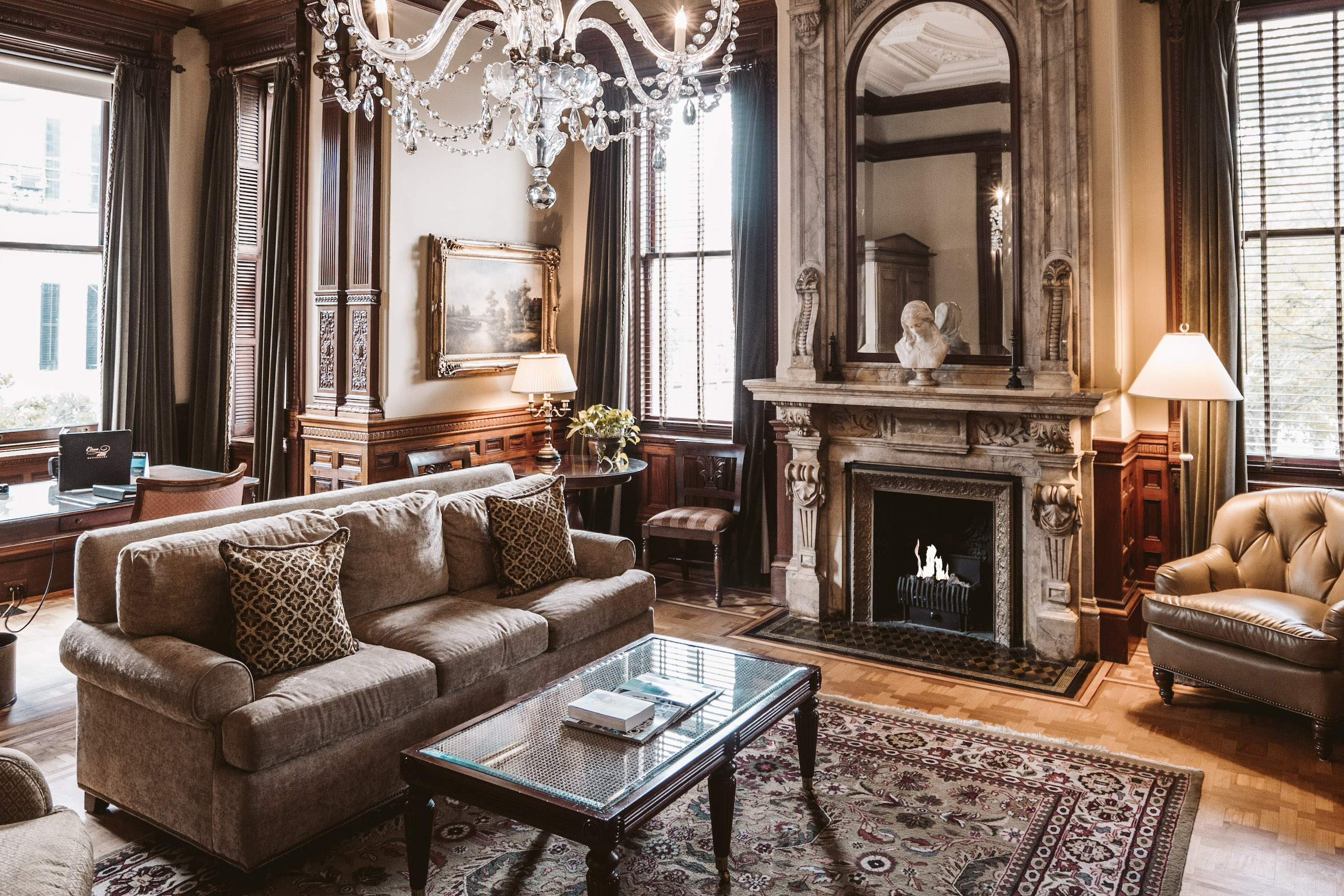
Staying at the Wentworth is less about amenities and more about rhythm. Each day begins with coffee and tea in the sunlit conservatory, followed by a breakfast that defies hotel stereotypes. Forget steam-table eggs: here, flaky croissants, local stone fruit, and she-crab soup grits arrive at linen-draped tables. At 4 p.m., guests gather in the parlor for wine and a charcuterie board laden with house-made pickles, bourbon-glazed pecans, and pimento cheese tarts. By night, decanters of sherry and brandy appear alongside petit fours. There’s no background music; the mansion’s ambiance relies on crackling fires and murmured conversation.
The staff, discreet yet warm, seems to anticipate needs before they’re voiced. This is not the sort of place where you’ll find a hurried front desk staff or the anonymity of a large hotel chain. Instead, there’s a sense that everyone—from the concierge to the housekeepers—takes pride in the experience they create. Beyond that, children under 12 are not permitted, a policy that preserves the mansion’s serene, adult-oriented atmosphere.
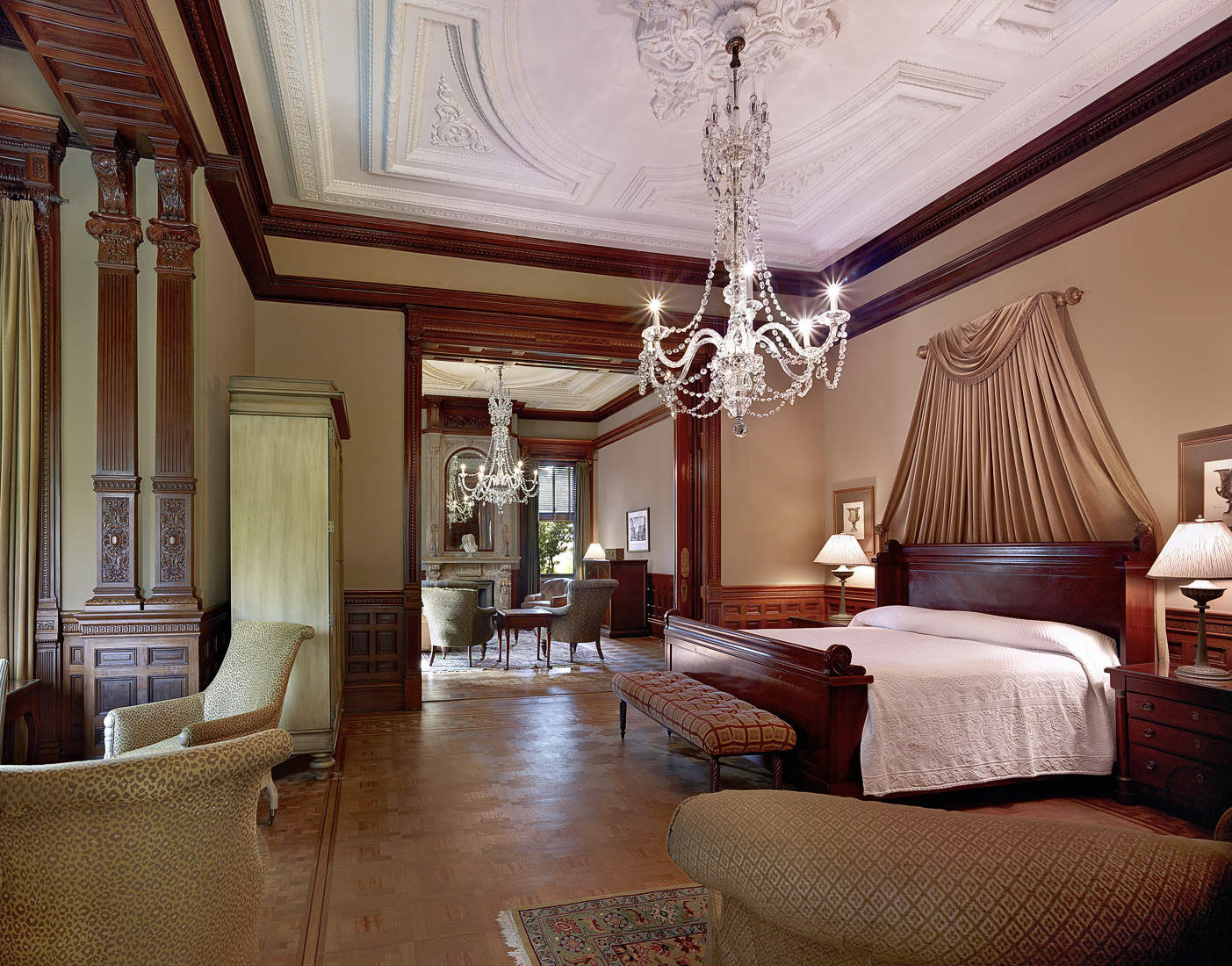
No two rooms at the Wentworth Mansion are alike, but each embodies a sense of grandeur from its 19th-century craftsmanship and modern luxury. The Rodgers Suite, once the master bedroom, is opulent with soaring 14-foot ceilings, intricate crown moldings, and a four-poster bed draped in Belgian linen. A fireplace framed by hand-painted tiles anchors the room, while original wooden shutters, their louvers adjusted by brass knobs, filter sunlight into golden slivers that dance across the antique heart pine floors.
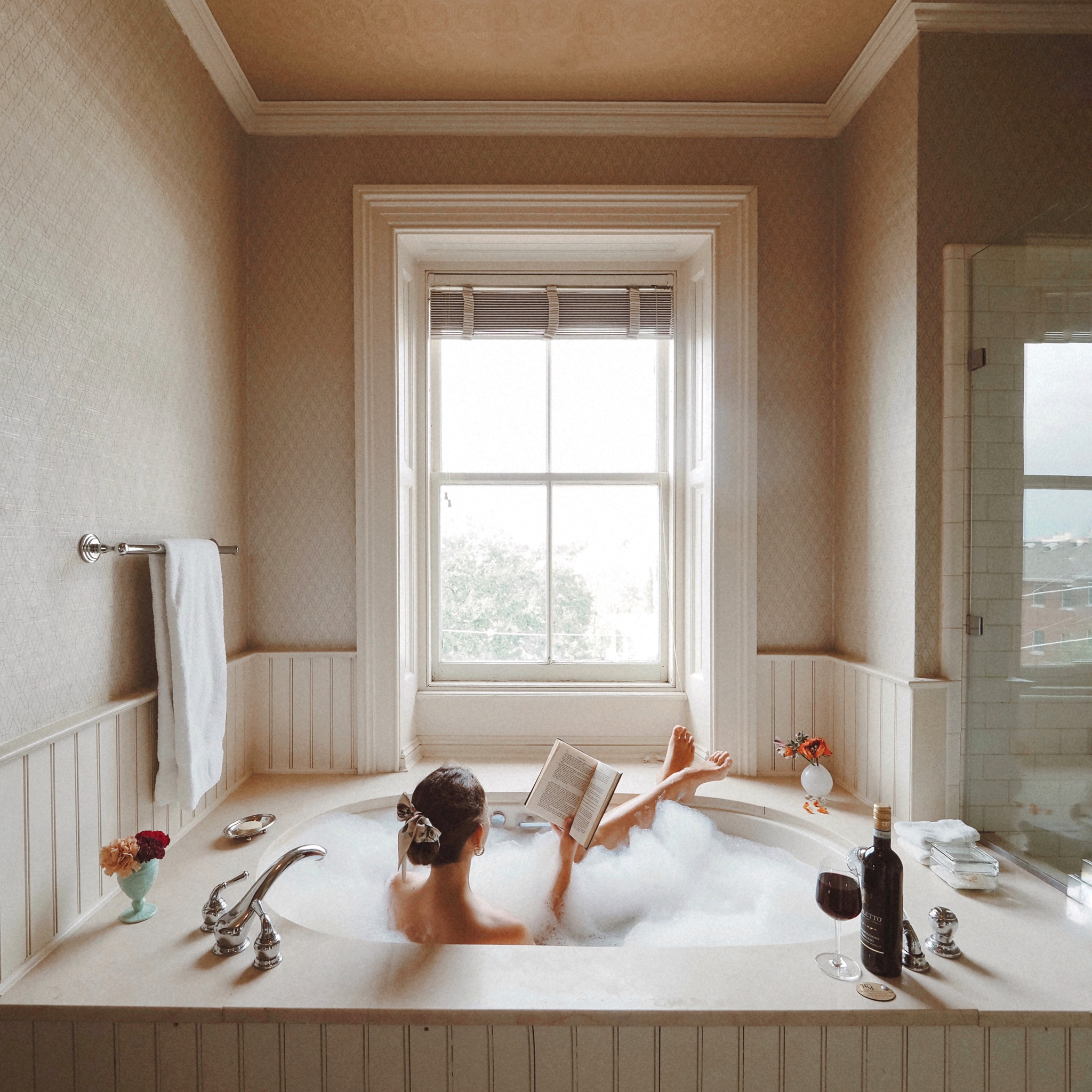
Bathrooms are wrapped in marble and designed for indulgence. Many feature deep jet tubs positioned beneath arched windows, inviting long soaks with a view, while rain showers stocked with artisanal soaps turn morning rituals into moments of quiet retreat. Modern comforts—Nespresso machines, smart TVs discreetly tucked away—coexist effortlessly with historic details, from carved mahogany armoires to pedestal sinks salvaged from European estates. Every element is chosen with intent, ensuring that while the Wentworth remains rooted in its Gilded Age past, it anticipates every contemporary need.
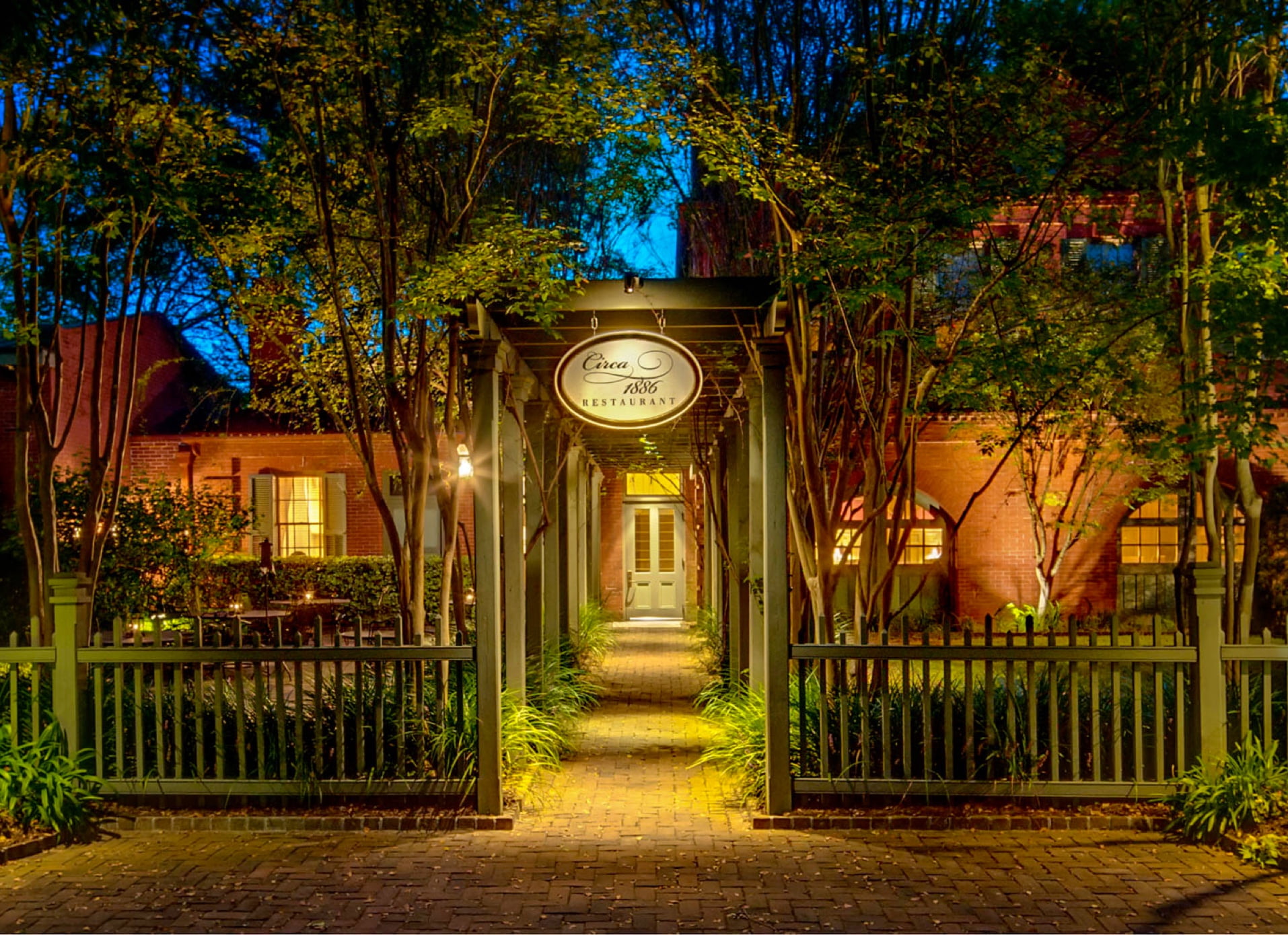
Housed in the mansion’s former carriage house, Circa 1886 is a destination in itself. The dining room, with its exposed brick walls and flickering lanterns, feels both rustic and refined. Wine pairings lean toward bold reds and crisp Loire Valley whites, curated by a sommelier who narrates each bottle’s provenance like a bedtime story. Chef Marc Collins, a James Beard Award semifinalist, reimagines Lowcountry cuisine with wit and precision.
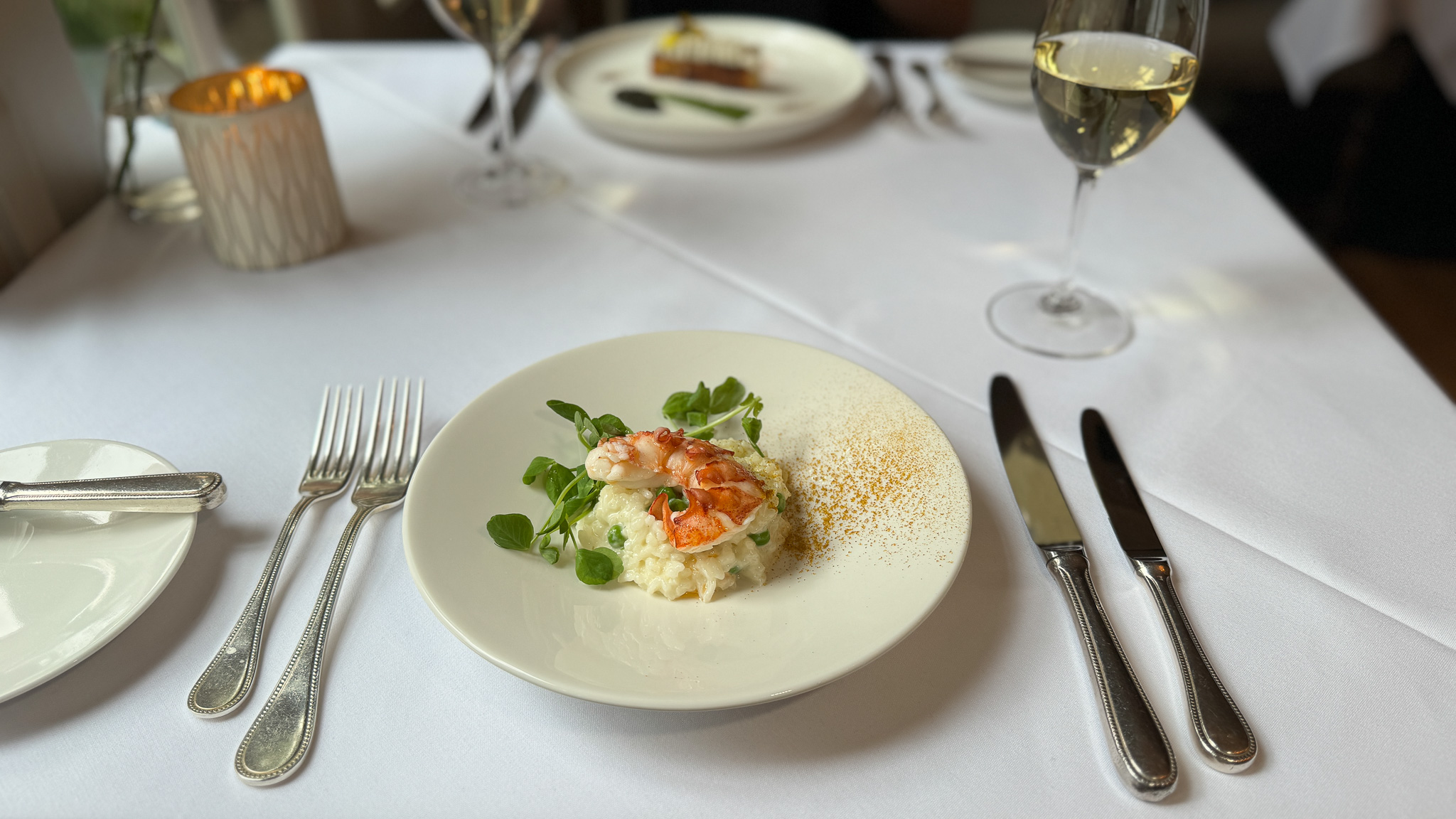
The menu avoids tired tropes (no buffet-line shrimp and grits here) in favor of playful, seasonal dishes: smoked quail with sorghum glaze, she-crab soup elevated by saffron foam, and a deconstructed benne seed “cheesecake” that nods to Charleston’s West African roots. Recognized by Travel + Leisure and holding a Forbes Four-Star rating, Circa 1886 has earned a loyal following among locals—a rarity for hotel restaurants. Its success lies in balancing innovation with reverence for the past, much like the mansion itself.
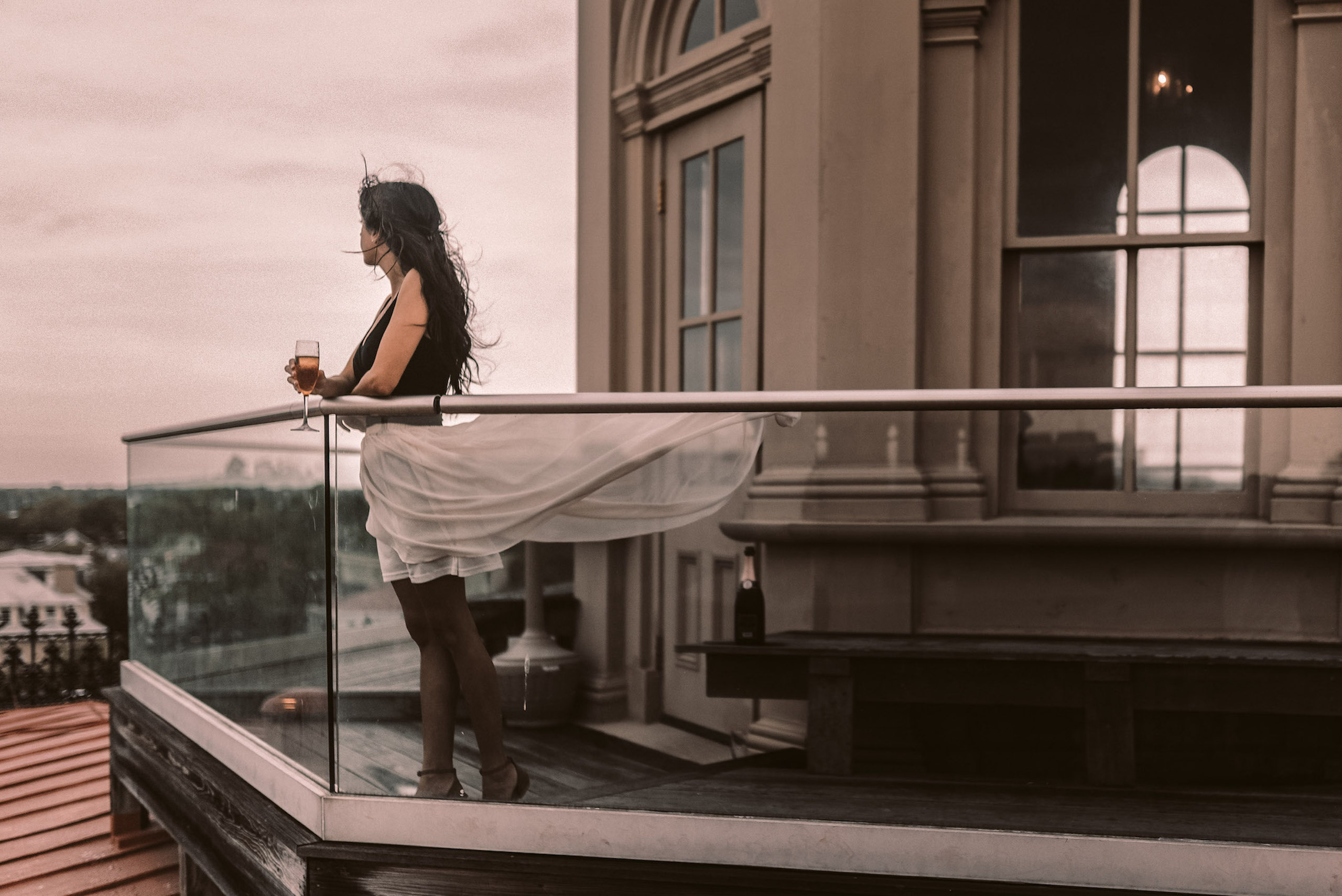
To stay at the Wentworth Mansion is to inhabit a living artifact. Its walls have witnessed earthquakes, economic collapse, and rebirth. Yet the hotel never feels frozen in time. Instead, it thrums with quiet vitality—a place where history is not behind glass but woven into every experience.
As you descend the cupola stairs after sunset, the city lights twinkle below. Somewhere, a ship’s horn echoes across the harbor, just as it did in Rodgers’ day. The mansion endures, not as a relic, but as a testament to Charleston’s uncanny ability to honor its past while embracing the present. In a world of disposable luxuries, that’s a rarity worth savoring.
![]()





